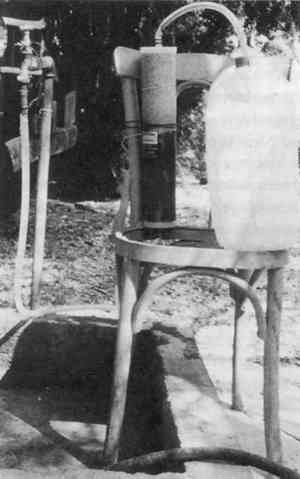CONSERVATION AND ARCHAEOLOGY IN GREAT BRITAIN AND THE UNITED STATES: A COMPARISONJESSICA S. JOHNSON
2 WHAT IS ARCHAEOLOGICAL CONSERVATION?The term “archaeological conservation” has been variously defined. In the United States, archaeological and ethnographic conservation have always been closely allied (NIC 1984). This relationship may be seen as an extension of the historical alliance of American prehistoric archaeology with anthropology and reflects the anthropological collections found in the United States. Alternately, in Great Britain the responsibilities of archaeological conservation only recently have sometimes extended to folklife and ethnographic collections (Pye and Cronyn 1987). In general, archaeologists and conservators view excavated material from two different perspectives. An incomplete understanding of each perspective contributes to the uneasy relationship that exists between conservation and archaeology (Moyer 1988; Thornton 1989). Many authors have discussed this relationship (Hamilton 1976; Borque 1980; Keene 1980; Morris 1980; Tuck and Logan 1987; Logan 1988; Hodges 1987a). The huge range of interests of each group of professionals has sometimes made it difficult for archaeologists and conservators to agree on what should happen to excavated material. The responsibilities and interests of archaeological conservation have not been clearly defined by the conservation profession. Leaving aside the question of whether conservation should have strictly defined boundaries delimiting its responsibilities, this problem exacerbates communication difficulties between conservation and other disciplines. Within the conservation profession there is a range of opinion on what the responsibilities of archaeological conservators should be (Pye and Cronyn 1987; Johnson and Wallis 1991). Archaeological objects, if they are housed in art museums, are treated by conservators
To confuse the role of conservation in archaeology even further, archaeologists in the United States have used the term “conservation archaeology” to refer to preservation of the entire site in situ or excavation of a site threatened by development (Lipe 1978; Fowler 1986; Johnson 1988). For these archaeologists, conservation of objects is relegated to a support staff position with responsibility beginning only with the curation of recovered materials after all excavation and primary analysis are finished (McGimsey and Davis 1977). To elucidate the historical relationship between archaeology and conservation, a narrow definition of archaeological conservation will be used for this paper. Archaeological conservation is the conservation of material produced by systematic field excavation. It includes both field or first-aid treatment as well as more complete examination and treatment in the laboratory, based on an understanding of chemical and physical properties of materials. It also includes research in technology and the development of new treatment techniques. Archaeological material includes the objects and samples recovered during excavation as well as the records produced by the archaeologists at work. Objects that have been buried but have no exact site provenance are not considered archaeological in this definition, though a discussion of the ethics of treating this material is sorely needed. This definition also does not include in situ preservation of sites and monuments before or after excavation; this type of preservation requires specialized knowledge of many other techniques, though conservators in the field may be called on to give advice. |
